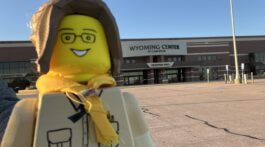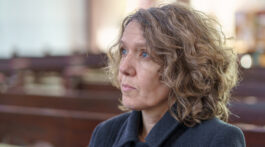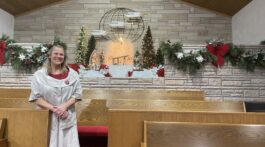The It’s Time conference (2012) brought to the attention of world church leaders the need to work in the world’s large cities (populations in excess of 1 million). Of the 580 cities with a population of more than 1 million, 31 have no Adventist congregation, and 119 have fewer than 125 Adventists.1
The North American Division approved a program to partner with local conferences and churches to plant 1,000 community churches from 2016 to 2020. In addition, the NAD asked conferences with less than 15,000 members to plant three churches every year for the following five years.
We looked at our Minnesota Conference territory and noted that there were many neighborhoods, towns and counties that still did not have an Adventist presence, and there were a number of people groups who were mostly unreached. We took this challenge seriously, and prepared a strategy to plant new community churches.
I knew it was not realistic to expect all churches to plant a new congregation, but I hoped every church would at least commit to pray for church planters, partner with an existing church plant, or send missionaries into zip codes with no Adventist presence. I believed most existing churches would benefit from getting involved in church planting if they understood our role in the Great Commission was to go, baptize and make disciples (Matt. 28:18-20).
The early church commission
The book of Acts records what the disciples did in carrying out the Great Commission. There are no scriptures that tell us to plant churches, but we are clearly commanded to make disciples. These disciples then become churches. In the New Testament, the Greek word for church means “the called out,” thus the word church refers to a congregation, or the whole body of Christian believers.
Church planting was a natural phenomenon that followed Paul’s evangelism. By the time he made it to Thessalonica, Paul was planting new churches—people called out from the world to follow Jesus—all over Asia Minor. These new churches became transforming powers in their communities.
The decision of the church in Antioch to set apart Paul and Barnabas, commissioning them for the work, was a watershed in the church’s ministry. Throughout church history, when the church followed God’s Word and participated in the gospel commission, people who were once spiritually dead came to life.
The Adventist commission
Our founding fathers saw the Adventist Church as a movement, streaming into population centers with the good news of Jesus Christ. The history of church planting in the Minnesota Conference began with a call made in 1854 by Julia E. Grems, a 17-year-old girl, to the brethren in Battle Creek.
In 1857, George Morse, who later became the first Minnesota Conference president, moved his family to Minnesota on the recommendation of the Whites. By 1861, five churches were planted in Minnesota.2 The work continued to grow among the various immigrant groups, especially the German, Norwegian, Swedish, Scandinavian and Danish peoples, well into the 20th century.3
The General Conference long ago saw church planting as the means for reaching communities and people groups with the gospel. This strategy allows individuals, churches, and conferences to plant new churches to reach unreached people.
Conferences can target geographical areas, individuals can create small groups, and churches can invest in bringing together converts to form new congregations. It is this church planting strategy, and the world church’s strong missionary activities, that has made the Adventist Church one of the fastest-growing denominations in the world.
EYES on eternity
Like Paul, we too should use a simple twofold strategy. First, enter the largest zip codes without Adventist presence, evangelize and plant a church. Second, encourage planting churches in all zip codes, regardless of size, that have no Adventist presence.
In order to mobilize, organize and motivate our churches and members, the Minnesota Conference administration emphasized two things. First, a united, focused and concerted effort in specific areas precipitated the creation of “EYES on Eternity,” which stands for Evangelism; Youth; Adventist Education; and Spirituality, Stewardship and Service.
Second, the administration internalized the statement made by Ellen G. White: “Christ’s method alone will give true success in reaching the people. The Savior mingled with men as one who desired their good. He showed His sympathy for them, ministered to their needs, and won their confidence. Then He bade them, ‘Follow Me.’”4
When churches used this strategy to plant a group, their people became energized. The existing churches’ visions became larger as they participated in church planting. And the church plant groups were more in tune with their geographical context.
Making plain the redemption story
Conference administration saw the challenge to plant 1,000 churches by 2020 as a challenge to engage every member in evangelism and awaken inactive congregations. The church is a movement that should be making plain the redemption story in practical ways to the unchurched in our communities, making disciples and planting churches.
In 2015, our conference membership stood at 9,558. We had 73 organized churches, 13 companies and 12 groups.5 Statistics from the NAD showed that in the city of Minneapolis, church membership grew by 19 percent, putting us among 10 metropolises in the NAD with membership growth.6 In the five year period leading to 2020, we have organized six new churches, established 20 new church plants, and our membership now stands at 10,710. We have 79 churches, 13 companies and 23 groups.7
I challenge us to continue planting new congregations. We have seen in our conference that church planting leads to numerical growth. Individually, collectively as churches, and as conferences we can all work together. As members of the Adventist Church, we all need to recapture this kingdom-mindedness and say it loud and clear: “Church planting works.”
- 1gm.adventistmission.org/taking-mission-to-the-cities
- Parke, Kathy Joy. 1862–2012. From the Wilds of Minnesota …150 years in the Minnesota Conference of Seventh-day Adventists. p. 1-2.
- Ibid. p. 7.
- White, Ellen G. Ministry of Healing. p. 143.
- The Northern Light, Minnesota Conference of Seventh-day Adventists Second Quadrennial 108th Regular Constituency Session. May 15, 2016. p. 20.
- www.nadadventist.org/news/work-together-and-be-not-deterred
- www.eadventist.net/dashboard?locale=en










